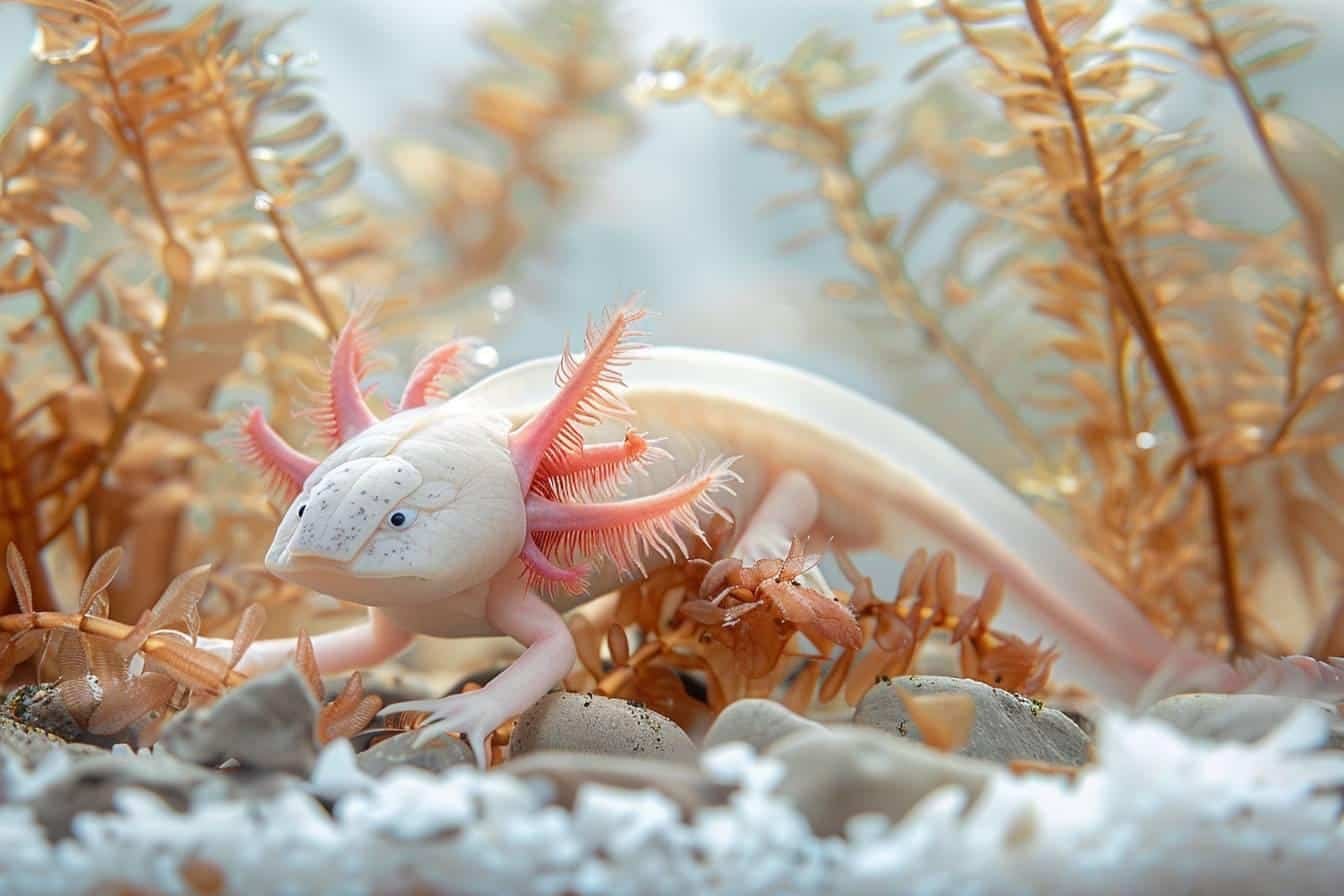Raising baby axolotls may seem complicated, but with a little knowledge and patience, anyone can succeed. In this publication, I'm going to explain how to feed baby axolotls, from hatching to adulthood. Follow this comprehensive guide to ensure their healthy, vigorous growth.
Preparing the habitat for baby axolotls
Even before your baby axolotls see the light of day, it's essential to prepare their habitat properly. The first step is to collect the plants and decorative items where the female laid her eggs. Place them in a storage container with water, stones and decorations.
| Step | Description |
|---|---|
| 1 | Recovering plants and decorative elements |
| 2 | Collect the eggs from the ground and place them in the tray |
| 3 | Ensuring a sufficient volume of water |
| 4 | Stir the water 2-3 times a day |
| 5 | Keep water at 18-20°C for 10-15 days |
Next, collect the eggs scattered on the ground and place them in the same tray or in another container. Make sure there is enough water to guarantee a good supply of oxygen, and stir the water two or three times a day to avoid stagnation. Keep the water temperature between 18 and 20°C for 10 to 15 days until the larvae emerge.
It is impressive to see the little larvae emerge from their eggs. They don't all emerge at the same time, so be patient and don't release the ones that haven't managed to pierce their membrane. They won't be strong enough to survive.
Feeding larvae and young axolotls
Nutrition is crucial for axolotls from the moment they are born. For the first 48 hours, the larvae survive thanks to their yolk sac. Then it's time to think about their first live food.
Artemia nuggets
When the yolk sac runs out, you need to introduce Artemia nudiplia. These little creatures are an ideal first food. Feed the larvae three or four times a day for the first four weeks. Believe me, it's quite a magical moment to see these little mouths gobbling up their food!
Bloodworms and pellets
When the front legs of the larvae start to appear (at around 2 cm), you can introduce bloodworms to supplement the Artemia Nauplia. At this stage, the larvae can also start to consume crumbled or 0.5-1.2 mm pellets.
The juveniles, which measure between 5 and 6 cm, can be fed on pieces of freshwater fish, fry and small earthworms. The mud worms become insufficient nourishment once the axolotls have reached 10 cm.

Maintenance of bins and care of axolotls
As a young pet shop floor manager, I've often seen how crucial it is to look after your tanks. To start with, use simple tupperware and then gradually increase the space available to avoid cannibalism between your larvae.
- Change the water every day
- Make sure the water has rested for 24 hours before use.
- Do not apply sand until the larvae have reached 10 cm in length.
- Avoid exposure to the sun
These few rules will help to maintain an environment that is conducive to the growth of axolotls. I've often seen mistakes made by beginners, who end up exposing their larvae to too much light or changing the water straight from the tap. Avoid these mistakes to ensure good development.
Evolution and growth of axolotls
It is fascinating to follow the evolution of the larvae from their initial size of 1 cm to when they reach 10 cm. The development of legs and physical characteristics takes place in very distinct stages.
Adult nutrition
For adult axolotls, a live food diet is still the best option, avoiding fish and seafood. Use specific pellets to provide them with the best nutrients. Here are some recommended types of pellet:
- 0.5 to 2 mm pellets for larvae
- 3 mm pellets for sub-adults
- 4.5 to 5 mm pellets for adults
As a supplement, give them pieces of freshwater fish. Avoid giving them meat from warm-blooded animals. The more frequently young axolotls are fed (3-4 times a day), the faster they grow. As adults, this frequency can be reduced to once or twice a week, depending on their size.
For more advice on raising aquatics, take a look at our various articles on axolotls. You'll find useful tips for all aquarium enthusiasts.
Finally, don't forget that the axolotl is a carnivorous animal that feeds mainly on small freshwater fish, worms, larvae and shrimps. Raising these fascinating creatures can be a rewarding experience, provided you follow these tips and provide them with a suitable environment.

2 thoughts on “Comment nourrir des bébé axolotl : guide complet pour débutants”